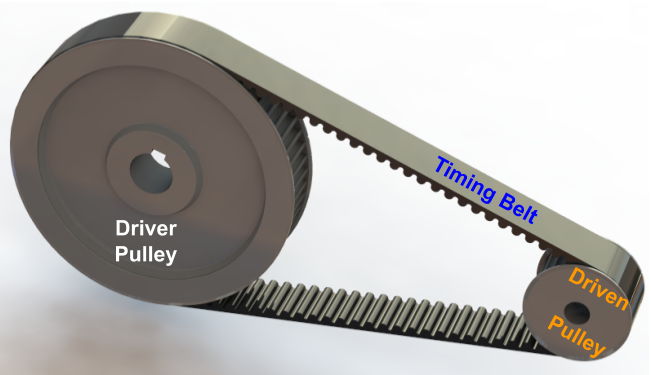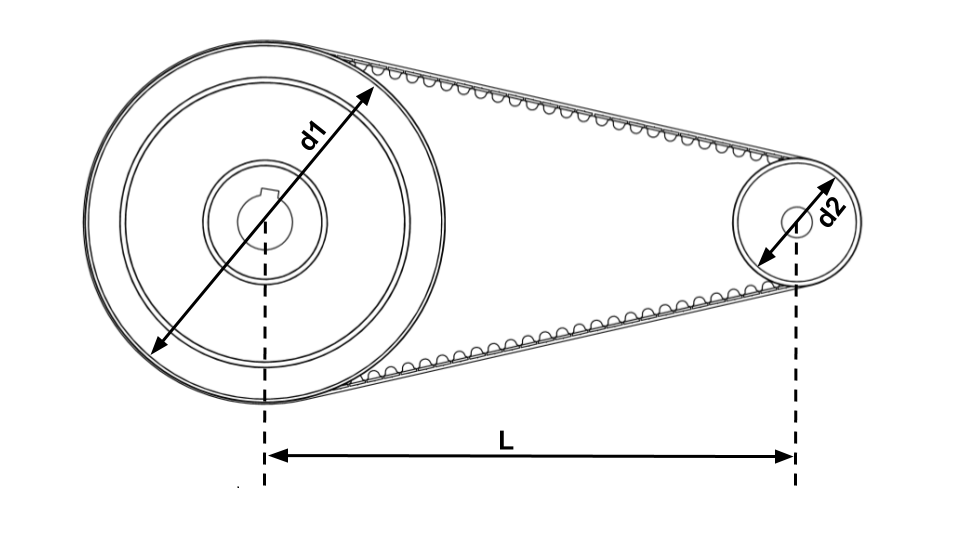Various types of Belt drives are used to transfer power from one shaft to another. Each belt type has its advantages and limitations. Timing belts are one of the widely used drives to transfer synchronous motion. In this article, we will discuss what is a timing belt? its advantages, disadvantages, and applications.
What is a Timing Belt?
A timing belt is a type of synchronous belt consisting of teeth similar to gears. It has the application to transfer synchronous rotation motion from one shaft to another shaft. The complete system consists of a driver, driven, and idler pulley connected with a timing belt.

Similar to gears, the number of teeth on the driver and driven timing pulley determines the velocity ratio between driver and driven shafts. For example, If the number of teeth on the driver pulley is higher than the number of teeth on the driven pulley. The driven shaft will rotate at a higher speed compared to the driver shaft.
Belt Length Calculations?
You can calculate the Belt length if timing-pulley diameter and center to center distance between the driver and driven pulley are known.

Calculation Formula

Belt Length Calculator
Here is the calculator to calculate belt Length.
Advantages of Timing Belts
Timing belts have the following advantages compared to flat or round belt drives.
- Low Noise
- Low vibrations
- No slippage Problem
- High Mechanical Efficiency: Upto 98%
- Constant Velocity Ratio
- Low Maintenance
Disadvantages of Timing Belts
Along with so many advantages, they have the following limitations as well:
- High Cost
- Initial alignment with the timing pulley is required.
- Used to transfer relatively low power.
- Transfer power at a relatively smaller distance.
Applications of Timing Belt and Pulley Drive
Similar to gears, Timing belts transfer rotational motion from one shaft to another with minimum mechanical losses. Their application includes:
- Synchronize engine crankshaft and camshaft motion.
- Sewing Machines
- 3D printer
- Treadmill
- Conveyor System.
- CVT Automatic transmission
- Industrial automation products. etc
To sum up, timing belts transfer rotational motion with a constant velocity ratio from one shaft to another. Due to low cost and maintenance, they are replacing gears in various applications. Click this link to know the difference between timing belt and timing chain drives.
We will keep adding more information on timing belts. Add your suggestion, comments, or questions in the comment box.

Add a Comment